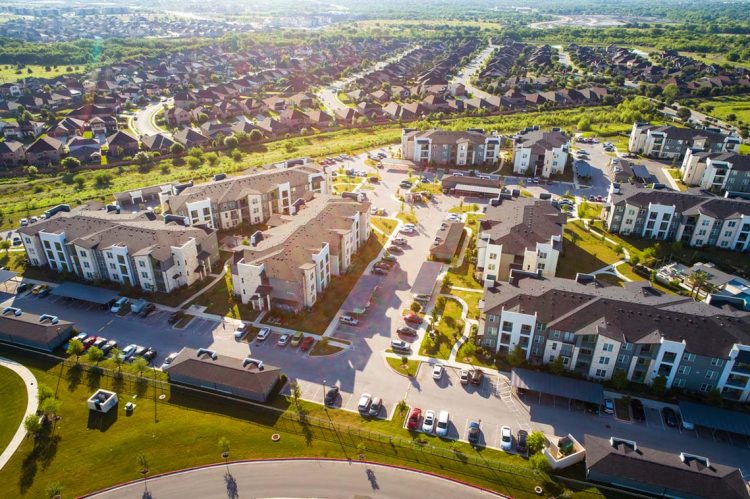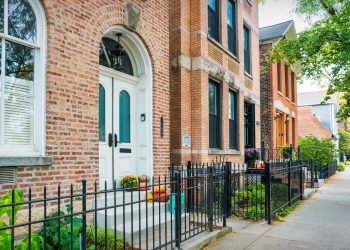Overall housing starts were down 1.6% in September to 1.56 million, pushed down by declines in multi-family construction. The September is the number of housing units builders would begin if development kept this pace for the next 12 months.
However, single-family housing production held steady, with strong demand offsetting building material supply shortages and delays, according to the latest U.S Census data.
Single-family starts were flat from the previous month at a 1.08 million seasonally adjusted annual rate—up 20.5% year-to-date. The multifamily sector decreased 5.0% to a 475,000 pace.
The breakdown:
Housing Starts: 1.55 million (-1.6% month-over-month, +7.4% year-over-year)
Multifamily Starts: 467,000
Single-Family Starts: 1,080,000
Building Permits: 1.59 million (-7.7% month-over-month, +1.1% year-over-year)
Multifamily Permits: 498,000
Single-Family Permits: 1,041,000
Completions: 1.24 million (-4.6% month-over-month, +13% year-over-year)
Multifamily Completions: 280,000.
Single-Family Completions: 953,000
Regional year-to-date data:
Midwest: +12.1%
South: +18.6%
West: + 22.6%
Northeast: +28.9%
What the industry is saying:
“New-home construction fell modestly, 1.6% in September from the prior month, but the year-to-date activity is solidly higher by 17% compared to 2020 and by 23% compared to the pre-pandemic year of 2019. More housing inventory will therefore steadily emerge. Newly constructed homes are generally larger in size and more expensive than existing homes, and not geared toward first-time buyers. Nonetheless, more supply of these homes allows trade-up buyers to make their move and in the process place their previous homes on the market,” said Dr. Lawrence Yun, National Association of REALTORS® chief economist, in a statement.
In addition to construction, more inventory will appear as the mortgage forbearance program is winding down. The current mortgage default rate of at least three months is running high at 3.5% compared to less than 1% before the pandemic,” added Yun. “However, foreclosures have been at historic lows so far due to the forbearance support. The default rate will certainly fall as long as the economy continues to generate jobs, but the end of the federal support program inevitably means some homeowners will need to sell. This will be another source of housing inventory. The listing count across the country is still below one year ago and near record lows. Based on increased home construction and from the ending of the mortgage forbearance program, more inventory will appear next year compared to this year.”
“Single-family construction continued along recent, more sustainable trends in September,” said Chuck Fowke, chairman of the National Association of Home Builders (NAHB), in a statement. “Lumber prices have moved off recent lows, but the cost and availability of many building materials continues to be a challenge for a market that still lacks inventory. Policymakers should continue to work to improve supply-chains.”
“Builder confidence increased in October, which confirms stabilization of home construction at current levels,” said NAHB Chief Economist Robert Dietz in a statement. “The number of single-family units in the construction pipeline is 712,000, almost 31% higher than a year ago as more inventory is headed to market. Multifamily construction has expanded as well, with almost a 6% year-over-year gain for apartments currently under construction.”
“With 4.8 million millennials turning 30 over the next three years and embracing homeownership, we expect buyer demand to remain strong. The transition to remote work that began during the pandemic is maturing into the preferred long-term employment arrangement for the majority of Americans,” said George Ratiu, manager of Economic Research, realtor.com®, in a statement. “This shift is also changing homebuyer preferences, with larger homes, quieter suburban neighborhoods and access to the outdoors high on the list of must-haves. For builders, the biggest challenge remains building enough homes with these features at affordable prices. Meeting this challenge will become even more imperative as we expect mortgage rates to continue rising into 2022, squeezing potential buyers’ budgets with higher financing costs.”
“New home starts declined in September after an initial rebound in August, amid continued concerns about delivery timelines. As in previous months, the multifamily sector made up a significant share of total starts, as both single-family and multifamily properties have struggled with similar labor and material shortages,” said Kelly Mangold of RCLCO Real Estate Consulting in a statement. “While low interest rates have fueled robust demand—builders and developers must continue to devise creative solutions to keep projects moving, allowing much-needed residential inventory to progress toward delivery.












